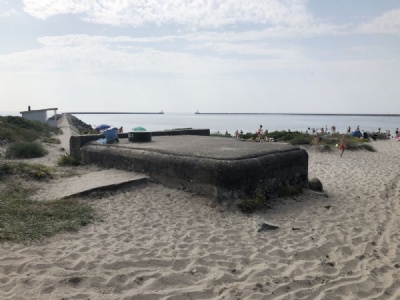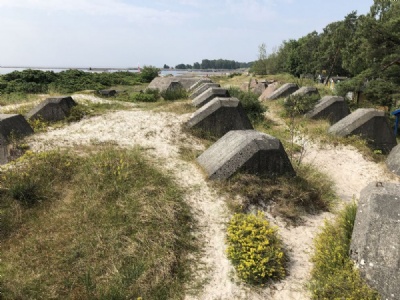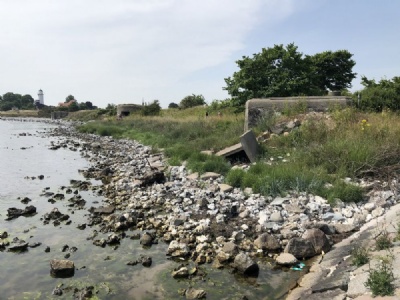Skåne - Defense Line
In the late thirties when the war clouds began to pile up over Europe, Swedish government and the armed forces realized that war could not be ruled out. From Swedish perspecive the southern coast was the most likely scene where an enemy amphibious invasion would take place. Therefore, in 1939, they began to build a line of defense from the areas around Båstad along the coast all the way to the areas around Vieryd in Blekinge.
The defence line, also called the Per Albin line, after the Swedish prime minister (Per Albin Hansson) at the time, was built up in stages. It consisted mainly of three different types of defense, machine gun positions, observation bunkers and anti-tank positions. In 1941-1942 the whole line was reinforced as a german amphibious invasion could not be ruled out. The reinforcements were made where the threat was seen as most probable for the moment. The main task of the defense line was to prevent a hostile landing. In line with Germany’s setbacks, the expansion of the defence line also came to a halt.
The bunkers were not intended to stay in for longer periods. They were only built to be manned when an enemy invasion was expected. The men on duty had quarters elsewhere when readiness was declared. For instance at farms, schools and tent camps would becme temporary quarters if the situations called for that. In total, 1063 bunkers were built along the coast as part of the defense Line. After the end of the war in 1945, the line began to be disarmed, but in connection with the Cold War, the line was reactivated and modernized to meet the needs.
Current status: Paertly preserved/demolished (2021).
Location: 55°24' 06.91" N 12°56' 37.76" E (Falsterbokanalen).
Get there: Car.
Follow up in books: Gilmour, John: Sweden, the Swastika and Stalin - The Swedish Experience in the Second World War (2011).
















To find bunkers of the defense line, you do not have to look far, just drive along the coast and you will find them everywhere. On beaches, in meadows, in fields, on cliffs, in pastures, in beach forests and in gardens. They have in some ways become part of the coastal topography and an element of the beach environment. Most bunkers seem to remain, albeit in varying condition, and most appear to be sealed. Probably because people should not hurt themselves but also maybe because they should not become a haunt. The sealing has unfortunately contributed to the fact that in many cases they have been distorted and in some cases look more like concrete clumps than bunkers. But the ease of finding them makes them easy to visit. They are also scattered among much more popular and well-known attractions, which means that they can be combined with other sights along the coast. Nevertheless, they are a reminder of a time when an invasion of Sweden could not be ruled out and thus they have a historical value worth preserving for future generations.